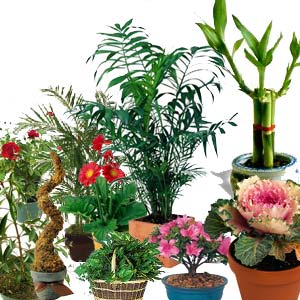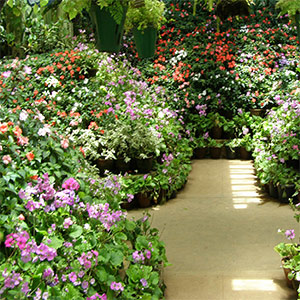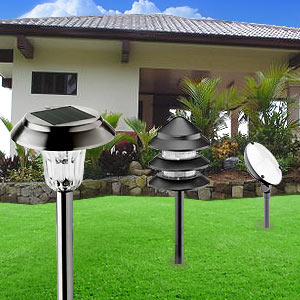Ornamental Plant

Your garden is an extension of the house. A lush garden, healthy plants and colorful flowers can do wonders for you! Gardening experts settle for ornamental plants, fragrant flower plants in beautiful shapes and varied colors to usher in a decorative ambience. Ornamental plants can be aesthetically placed indoors in keeping with the décor and style of the room. Find out tips on indoor plant care.
Decorate everywhere
Ornamental plants with beautiful flowers and leaves in graceful forms and shapes are widely planted indoor as well as in the garden. There isn't any specific method that should be adhered to. However conscious planning combined with specific selection to strike the right combination of ornamental plants is necessary to usher color and life to your landscape. Breeders have created numerous ornamental varieties of plants and flowers. Bring your ideas together, put your creativity to best use, know the art of blending grasses, shrubs and flowers with ornamental plants for a beautiful breathtaking Eden right at your doorstep. Having created an ornamental garden, you should also know how to take care.
Making a choice
Before you embark on garden decoration, take into account key factors:
- Total garden area available
- The focal area
- The site conditions - favorable and unfavorable
- Amount of sun the garden will receive
- The type of soil
- List of suitable plants for consideration
- Requirements of plants for healthy growth
- What you desire, the plants you like most
- Any specific color scheme
- Where you need height/borders
- Time required for care
- Special consideration (kids and pets)
- Budget set for decorating garden.
Selecting ornamental plants
There are a number of decorative ornamental plants that are used for aesthetic purposes. An ornamental plant extends a decorative effect, seldom grown for commercial value or any other value. It could be the color, texture or the plant specimen that brings about the decorative effect. Apart from flowers, the leaves, scent, fruit, stem and bark of ornamental plants qualify for decorative purposes. In the case of Rosa sericea, the prominent and rather vicious thorns are considered ornamental.
All you need to consider while selecting plant is that whether it suits the aesthetic purpose and is relatively easy to grow. The plants can be selected from any plant group, remember not to restrict your selection to a particular variety. As you proceed to select, bring about a co-ordination in terms of color, texture, size and dimension of plants. Plants cultivated for topiary and bonsai can also be considered as ornamental.
Exotic varieties
Begonias, Gesneriads, Hoyas and Passionflowers are popular ornamental specialties. Garden size, shape and design should be considered while selecting ornamental plants. You could fill the niches and decide to separate the flowerbeds; a lot depends on the role the plant should play in the garden. Certain plants are water dependent and thrive near water and some appear to do well in containers. Consider a broad range of flowering and foliage plants, small plants to shrub trees. Take a look at the sample provided here.
Aspidistra- Broad leaves of a deep green hue. Goes well with other broad-leafed plants. For optimum results, Aspidistra requires a moist, well-drained soil and shade.
Lady Fern- Has been popular since Victorian era. The lacy fronds can grow about eight inches in length. Moist, fertile soil with shade is most suitable for good growth.
Necklace Fern- Most suitable for rock garden. Can be grown in baskets too. Has a small fern with trailing fronds. Grows well in moist soil combined with good shade.
Japanese Painted Fern- Good choice for cooler zones for it is frost hardy. Has lovely gray-green fronds that can stretch up to 14 inches in length. Requires rich, moist soil and certain amount of shade.
Cleopatra Begonia- With star-shaped leaves, the plant grows upwards, say eight inches high. Suitable for container garden and can be selected as a focal point near water or rocks. Highly sensitive to frost, requires moist soil and certain amount of shade.
Metal-leaf Begonia- The leaves of this flower look metallic and grow about eight inches high. Requires shade, with a bit of sun especially in the morning. Grows well in humus-rich soil.
English Ivy- Varied varieties do well in containers or in the garden. Require well-drained soil with certain amount of light shade.
Keep healthy and attractive always
Air, soil and sunlight are important factors that determine the wellness of ornamental plants as well. If the conditions are ideal, good planting, right spacing, methodical fertilization, pruning, watering, mulching and pest control follow a good garden management program. Monitor the garden regularly as some plants are susceptible to attack from insects and diseases. Ornamental grasses like hollies and junipers if properly planted on a suitable site require very little care.
Indoor plant care
The adage 'kill your plant with kindness' really means too much of care can kill your plants rather than being advantageous. Indoor plants do not require too much care.
Temperature - The common temperature range for indoor plants is 65 to 75 degree in the daytime and 60 to 65 degrees at night. Select a place away from direct sunlight, so that the plant doesn't experience temperature extremes during the day or the night.
Light- Most plants that can be planted indoors thrive in shade or indirect sunlight. Some varieties of indoor plants require more sunlight.
Humidity- Less moisture in the air can make the plant dry. Wet the leaves with an occasional damp cloth, which can benefit the plants. Dust build up on the leaves can also be removed.
Soil: Balanced soil with a high pH level is most suitable for indoor plants. Always procure soil that is sterile which will also contain a good mix of nutrients. Repot the plant with fresh potting soil every couple of years.
Fertilizers: Indoor plants use far less nutrients when compared to plants grown in an open environment. Buy a balanced fertilizer and use it less frequently.
Watering: Indoor plants enjoy a good soaking of their soil. The best way to do this is by applying water to the point that it drains through the pot. Excess fertilizer and salt will be removed in the process and the plant remains healthy. It is easier to judge the water requirement of plants grown in an open area. The dry soil determines the water schedule. Using distilled water or rainwater is an effective way to prevent chemical contamination of plants through watering.
Top of the Page: Ornamental Plant
Tags:#ornamental plant #indoor plant care

Eco Friendly Homes
Garden Maintenance
Organic Gardening
Vegetable Garden Layout
Xeriscaping
Hydroponics Gardening
Feng Shui Garden
Ornamental Plant
Container Garden
Growing Succulents Indoors
Landscape Design Idea
Herb Garden Design
Window Garden
Lawn Mowing
Lawn Maintenance Tips
Orchid Care
Bonsai Tree
Cactus Plant
Thanksgiving Cactus
Rock Garden
Gardening Accessories

Bird Feeder
Leaf Blower
Solar Bird Bath
Lawn Sprinkler System
Outdoor Garden Furniture
Garden Fountain
Butterfly Garden
Electric Lawn Mower
Garden Pond
Landscaping

Landscaping
Landscape Lighting
Outdoor Canopy
Solar Garden Lights
Garage Plan
Home Improvement
Home Furnishing
Home Improvement Catalog
Feng Shui
Top of the Page: Ornamental Plant
Popularity Index: 101,151

